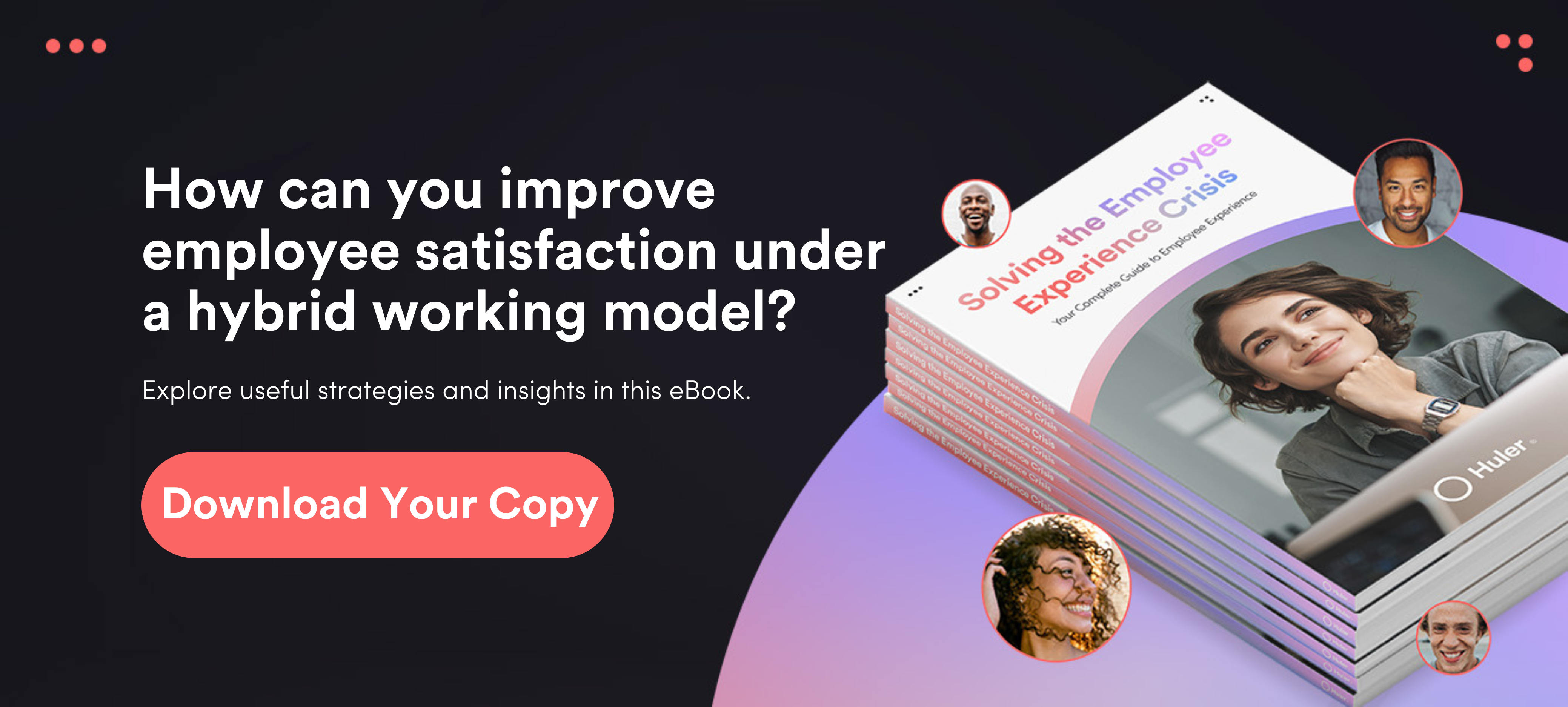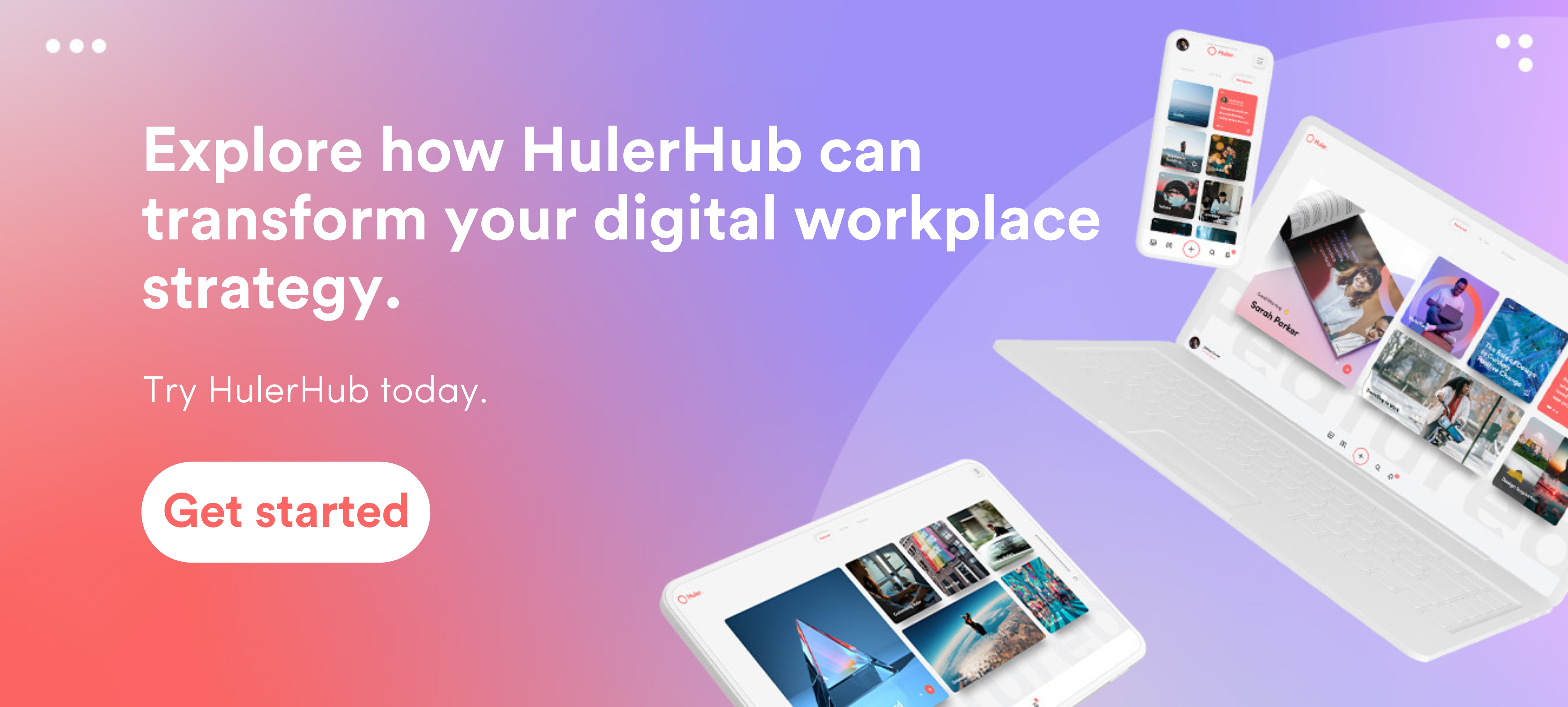What do you think of when you hear the word ‘intranet’? Today, it’s often associated with traditional intranets: those inefficient, clunky and no-fun platforms focused more on storing information in unhelpful ways than boosting the employee experience.
But, increasingly, the term is also being associated with modern intranets: people-first collaboration and communication platforms helping to transform the way people work for the better.
Maybe you have a traditional intranet but no one’s really using it. Or maybe you’re looking to create a modern intranet and want to understand what it should include. Traditional intranets won’t cut it anymore. Moving away from traditional intranets and towards flexible, cloud-based employee experience platforms is the modern solution.
Here, we’ll look at what you need to do (and not do) to ensure that employees get simple access to resources that they need, wherever and whenever they are working. Let’s get started.
Modern intranet vs traditional intranet
Intranet v digital workplace platforms.
Traditional intranets platforms focused on storing information and document management, without worrying too much about how easy it was to find or use that information. This meant that they were often clunky and impractical to use.
A digital workplace platforms known as modern intranet,unites your business’ content, communications and knowledge. It’s an internal communication tool that boosts collaboration and productivity, with a focus on enhancing the digital employee experience.
Modern intranets sit within your overall digital workplace, combining the tools people use in their daily work with easy access to information employees need to get the job done. It does this with a people-first approach, focusing on making sure people can locate and use everything they want and need within a friendly user experience.
Suggested reading: For answers to all your questions about what an intranet is and why it’s important, check out our guide — What is an Intranet? | Your Questions Answered
Why is a modern intranet important?
With an increasingly distributed workforce, modern intranets are the glue that holds your workforce together. They ensure that everyone can communicate, collaborate, interact and engage from wherever they are and whenever they’re working.
Not only do they help people work better and therefore enhance productivity, but their focus is also to improve the employee experience. It does so by creating a sense of consistency between the physical and digital workspaces.
Now you know what a modern intranet solution is and why it’s important. So how do you build one? Here’s a list of essential features for your modern intranet, from search functionality to cloud-based systems…
Embrace the cloud
Cloud-based workplace solutions enjoy many benefits over on-premise alternatives, one of the most significant being remote access. With 80% of businesses engaging in some form of hybrid working, remote access has never been more important.1
The private cloud is the obvious modern upgrade to the intranet. It provides a private and secure connection to applications, files and resources. However, the public cloud offers scalability and simplicity, making it an increasingly popular choice. With the public cloud, you avoid the need to invest in any on-premises infrastructure and can scale up or down on demand.
Traditionally, private clouds are considered more secure. However, increased security standards in data centres and improved encryption have significantly reduced public cloud security concerns.2 Unless you require specific and costly security measures, the public cloud is a safe, reliable and easy way to introduce flexibility to your intranet. It shouldn’t be a surprise that the cloud services market is projected to reach an all-time high of £282 billion in 2022, a 40% increase from 2020 numbers.3
Strategies to help
It’s important to remember that your intranet is really just a way to connect your employees with resources and applications. The simplicity of upgrading to the cloud depends on the cloud compatibility of other business-critical applications.
With 94% of businesses using the cloud in 2022, this transition should be within practical reach.4 However, you need to remember that your cloud-based intranet isn’t going to be able to provide easy remote access to a legacy application still hosted on-premise.
Don’t overcomplicate access
Access is perhaps the primary limiting factor of traditional corporate intranet solutions. Cloud-based options are part of the answer, making remote access far simpler. However, not all clouds are created equal. Consider the following:
- VPNs: Most private clouds require you to access systems via a VPN (virtual private network). This improves security at the expense of simplicity. For most businesses, HTTPS encryption provides sufficient security protections, and allows for simpler access.
- Passwords: Multi-factor authentication is important to modern security practices. However, it should be simple and straightforward, and limit the number of times you need to re-enter passwords during the day, which can negatively impact employee experience and productivity. This is something worth extending to the other applications you’re accessing via your intranet.
- Tool access: It cannot be stressed enough that your intranet is just a conduit to other resources and applications. These need to be accessible and usable through the cloud for your intranet to provide the remote access you need.
It’s also important that your intranet provides clear search functions that make it easy to find and access the right files and applications. This solution should work on mobile and desktop devices, and help simplify the entire experience of work-from-anywhere trends.
Strategies to help
A modern intranet system is the foundation of your digital workplace. For hybrid and remote employees, your digital workplace is the environment they engage with every day. You need to consider this wider perspective when investing in upgrades to communication, collaboration and file-sharing technology.
Make it mobile
We all know what it’s like to open a web page on mobile that’s been designed for desktop: it’s hard to use, not the best to look at and can lead to frustration. This is exactly what you don’t want from a modern intranet. You want it to be engaging and easy.
And as people increasingly work from across the globe, the intranet has to travel with them. It (obviously) has to be online and always available, but it has to be on mobile too. A modern intranet that isn’t available across desktop, tablet and mobile isn’t a modern intranet at all.
For a truly mobile modern intranet, you should:
-
- Optimise: Your intranet should be optimised for mobile devices so it’s as seamless working on mobile or tablet as it is on desktop.
- Make it consistent: If something appears on desktop but not on mobile, then functionality suffers and employees will naturally restrict themselves to working on the best platform, limiting the ways they can use the internet. By making it consistent across all devices, people don’t need to find a new way to use the mobile version compared to the desktop.
- Pick up where you left off: Someone might be halfway through a learning and development module on their desktop, then later want to finish it off on mobile. Making sure employees can pick up where they left off is crucial to ensuring a seamless experience.
Strategies to help
Nearly 70% of smartphone owners check their phones for messages, updates and information even if they haven’t noticed an alert.5 In other words, people are on their phones a lot — for work and leisure.
Modern intranets realise that to be truly modern they have to be mobile. By making sure it’s not just available on mobile, but as easy to use and accessible as on desktop, you can help expand where, how and when your employees work. Modern employee intranet software provides this.
Focus on user interface
The main goal of a digital workplace is to provide a positive environment for employees. User interface should be priority number one, with every step being taken to help people to do their job as easily as possible. For example, SharePoint remains the most common base technology used for intranets.
However, layers of modifications to legacy solutions can make them complicated to navigate. Fundamentally, you need to consider what it’s like to use your solution, not just whether or not it functionally works. Think about:
- Personalisation: You want to keep people focused on what’s important to them. That means providing admins and users with the ability to customise the digital workplace in a way that’s intuitive and productive for them, putting commonly accessed resources within easy reach.
- Good search features: You need to make it simple to find content, systems and apps, even if users aren’t entirely sure what they’re called. That means smart search functions that can use metadata to cross-check search terms, and then present information-rich results to users.
- Simple sharing options: Work is collaborative, and your intranet needs to make it simple to share resources, files and assets. Ideally, this should be as simple as a single click. It should also be possible to curate and share folders of information, rather than just single files.
- Easy updates: You want to provide a notification centre that helps people stay updated on what’s new in the system, and stay on top of changes without getting distracted.
The reality is that there’s often no one-size-fits-all system for every employee. A digital workplace should facilitate a high level of personalisation, through things like tile arrangements, theme selection, and advanced dynamic search capabilities. This enables a positive employee experience, which helps to drive employee engagement — check out our article on employee engagement vs employee experience to learn more.
Strategies to help
Whatever system you choose, it’s a good idea to involve the employees who will use these systems every day. Most solutions offer trial periods, during which employees can provide feedback on what they do and don’t like. Involving employees in the process helps ensure a sense of engagement, and ensures that the system fits their needs perfectly.
Don’t get hung up on definitions
Terms like digital workplace and intranet are often used synonymously, or end up defined in opposition to each other — but it’s important not to limit yourself with strict definitions. The priority should be to provide simple access to the resources employees need, with a focus on creating engaging, consistent employee experiences across the board.
Historically, intranets have been defined in comparison with the internet, and the public cloud is “the internet”. Realistically, many solutions that provide intranet functionality aren’t technically intranets — they are just private segments of the internet used by businesses.
The big variable is whether or not you need to host applications. A traditional intranet, or private cloud, might be used to host applications, rather than simply provide access to resources. However, if your business relies primarily on cloud-based SaaS (software-as-a-service), this isn’t really a factor. What you really need to think about is usability, the user interface, and your ability to use that platform to create a positive digital workplace experience for employees.
Strategies to help
An employee experience platform is a great modern alternative to an intranet. This provides an employee-focused digital workplace that emphasises usability and customisation, allowing employees and admins to curate access to critical applications, files and resources.
Again, this type of solution relies on the public cloud to host applications, and is ideal for businesses already operating in the cloud. What you get is an intuitive interface that employees can use to access all of those cloud-based applications and resources, wherever they happen to be working that day.
A modern intranet designed for the digital employee experience
Where traditional intranets were designed for information storage, modern intranets are designed for seamless information sharing. But simply picking a modern intranet isn’t quite going to cut it: you need one designed and built with the employee experience front and centre. This means an intranet that’s cloud-based, easy to access, with mobile access and an easy-to-use, customisable interface.
HulerHub updates the traditional intranet with a personalised interface and cloud-based flexibility, to create one of the best employee experience platforms on the market. Our customisable displays and unique sharing features provide individuals with access to what they need when they need it.
This bridges the gap between technology and people, creating a seamless, consistent user experience for in-office, hybrid and remote employees. If you want to try it out first-hand, get in touch and book a free demo today.
1 Hybrid working: now for the reality… – CMI
2 Private vs. public cloud security: Benefits and drawbacks
3 Gartner Forecasts Worldwide Public Cloud End-User Spending to Grow 18% in 2021
4 25 Amazing Cloud Adoption Statistics [2022] – Zippia
FAQs
What is a modern intranet?
A modern intranet prioritises user experience to bring together all information, communication and content in one place. It’s an internal communication tool that aims to boost collaboration, productivity and the employee experience. They are also referred to as employee intranets or employee experience platforms.
What’s the best modern intranet for employees?
The best modern intranet for employees is one that prioritises ease of communication, collaboration, interaction and the employee experience. There are lots of modern intranets available, with many tailored to specific industries, tools and the size of your business, for example, intranets for small businesses. Whichever intranet you choose, it should be focused on creating the best experience for employees.
Modern intranet vs traditional intranet
Traditional intranets are internal document management and communication tools, prioritising information storage and document management. Modern intranets are focused on providing a good employee experience, as an internal communication and collaboration tool that boosts collaboration and productivity.







